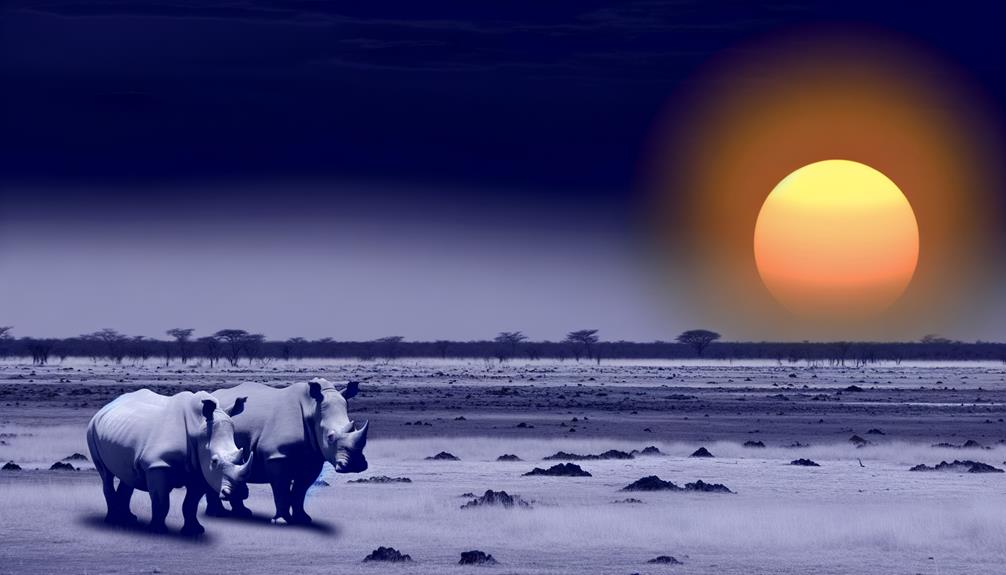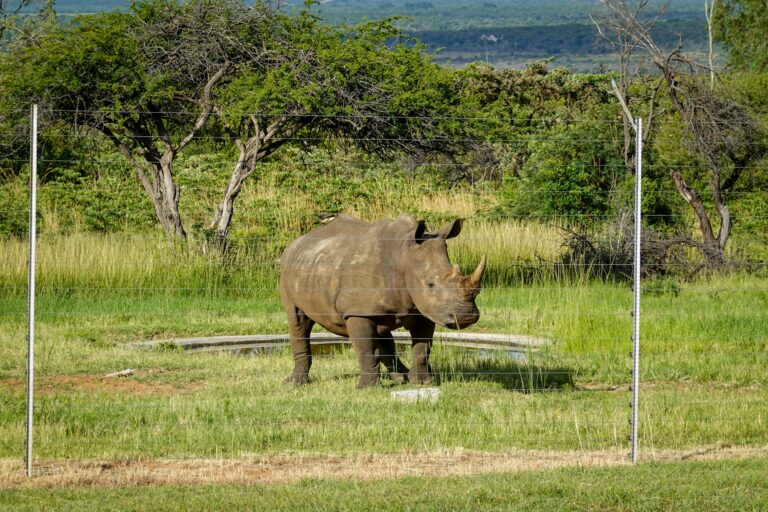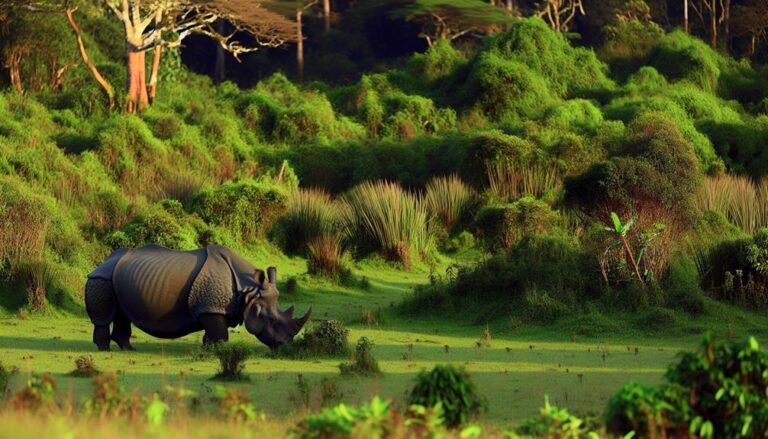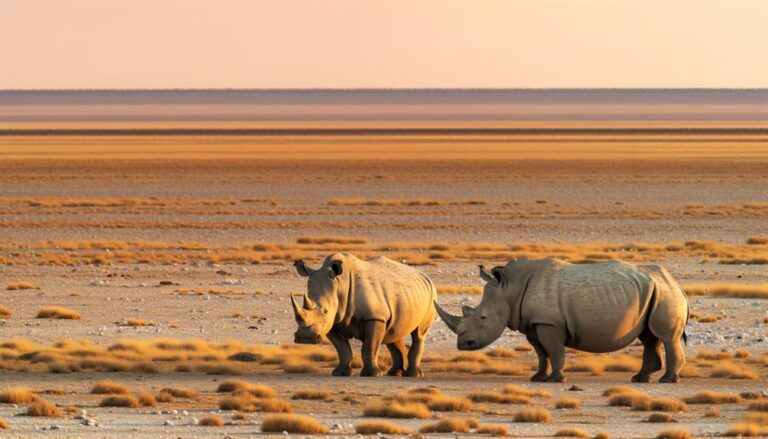Are There Only 2 White Rhinos Left?
Imagine you’re standing on the edge of a cliff, and what you’re witnessing is not a beautiful sunset, but the sunset of a species – the northern white rhinoceros. Yes, you’ve heard it right, only two remain: Najin and Fatu, both females. The last male, Sudan, bid his goodbye in 2018.
This situation paints a grim picture of the battle against illegal hunting for their horns. Now, the question lingering in every conservationist’s mind is – can the efforts of assisted breeding and collaborations give these majestic creatures a fighting chance?
Understanding the White Rhino’s Plight
Grasping the gravity of the white rhino‘s plight, you must understand that today, only two northern white rhinos exist in the world – both females named Najin and Fatu. These creatures, the last of their kind, are living testaments to the harsh realities of extinction, highlighting the urgent need for conservation.
Their species, the northern white rhino, is on the precipice of oblivion. The last male, Sudan, passed away in 2018, essentially rendering the subspecies extinct in the wild. Now, Najin and Fatu are the last hopes for their kind, held in captivity for their safety. Yet, they’re unable to breed naturally due to health issues, a predicament that has led conservationists to explore the use of assisted reproduction techniques in a desperate bid to save the subspecies.
The northern white rhino‘s near-extinction serves as a poignant reminder of the devastating impacts of illegal hunting and habitat loss, two major culprits behind the rapid decline in their numbers. The fate of these majestic beasts underscores the importance of acknowledging and acting against these threats, for the sake of not just the white rhinos, but all endangered species.
Conservation Efforts for White Rhinos
Given the dire circumstances facing Najin and Fatu, the last two northern white rhinos, it’s imperative that we look closely at the ongoing conservation efforts being made to save this majestic subspecies from complete extinction.
At the forefront of these efforts is the Ol Pejeta Conservancy in Kenya, where these two females live under vigilant protection. Their safety is paramount, but it’s not enough to ensure the survival of the northern white rhino subspecies.
In response, scientists and conservationists have turned to assisted breeding techniques, exploring innovative artificial reproduction methods. They’re creating embryos using stored sperm from deceased males and eggs from Najin and Fatu. The potential of this approach is exciting, but it’s a race against time and a testament to human ingenuity.
Collaborative efforts are crucial here. It’s not just about one group or one country – it’s a global responsibility. We’re seeing a rallying cry from experts worldwide, unified in their mission to prevent the extinction of white rhinos. The struggle for survival is real and immediate, and these conservation efforts represent an urgent, passionate response.
From corporations to local schools, people are increasingly aware of our affect on the environment and taking measures to preserve them. From lunch time fundraising in Australian Schools like the King’s College, to business fundraisers – people are increasingly aware that something needs to be done and are trying to make a difference.
Their success won’t only save a subspecies, but also serve as a beacon of hope for endangered wildlife everywhere.
The Future of White Rhinos
 white rhinos face extinction” style=”aspect-ratio: 16/9;”>
white rhinos face extinction” style=”aspect-ratio: 16/9;”>As we gaze into the uncertain future of white rhinos, it’s clear that the survival of this noble subspecies hinges on the last two remaining females, Najin and Fatu, and the scientific breakthroughs we’re striving to achieve.
The northern white rhinoceros, teetering on the brink of functional extinction, now relies heavily on assisted breeding techniques. Your understanding of this plight is critical, as is your passion for the cause.
Consider stem cell technology, one of the innovative conservation strategies being explored. With collaboration from institutions like the San Diego Zoo, we’re striving to harness this potent technology to ensure the genetic diversity of white rhinos, keenly aware of the risks of inbreeding.
Equally important is the concept of embryo implantation. This process involves placing a viable northern white rhino embryo into a southern white rhino surrogate. It’s an audacious attempt to keep the subspecies alive, a testament to human ingenuity and determination.
It’s a race against time, a battle against odds. But with your support, and the relentless pursuit of science, there’s hope that the white rhinos’ future will be one of survival, not extinction.
Conclusion
Yes, there are indeed only two northern white rhinos left, both females, residing in Kenya. The death of the last male, Sudan, has put this subspecies at the brink of extinction.
But don’t lose hope – through assisted breeding techniques and dedicated conservation collaborations, we’re fighting to save these majestic creatures.
The future of white rhinos hangs in the balance, but together, we can make a difference. Let’s fight for their survival.







